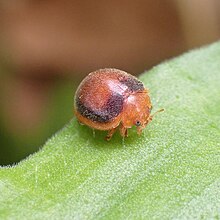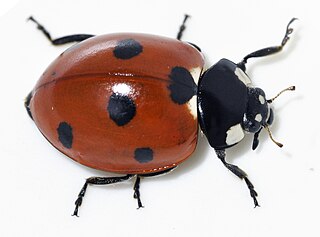
Coccinellidae is a widespread family of small beetles. They are commonly known as ladybugs in North America and ladybirds in the United Kingdom; "lady" refers to mother Mary. Entomologists use the names ladybird beetles or lady beetles to avoid confusion with true bugs. The more than 6,000 described species have a global distribution and are found in a variety of habitats. They are oval beetles with a domed back and flat underside. Many of the species have conspicuous aposematic (warning) colours and patterns, such as red with black spots, that warn potential predators that they taste bad.

The Epilachninae are a subfamily of the family of lady beetles, the Coccinellidae, in the order Coleoptera. Superficially, they look much like other ladybirds in the larger subfamily Coccinellinae, but they differ importantly in their biology, in that the members of the subfamily are largely or completely leaf-feeding herbivores rather than being predators. Accordingly, several members of the subfamily are crop pests, and sometimes cause locally serious crop losses.

Coccinellinae is a subfamily of lady beetles in the family Coccinellidae. There are at least 20 genera and 90 described species in Coccinellinae.
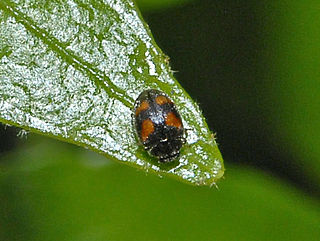
Nephus is a genus of lady beetles in the family Coccinellidae. There are more than 25 described species in Nephus. Several former species are now in the genus Scymnobius.
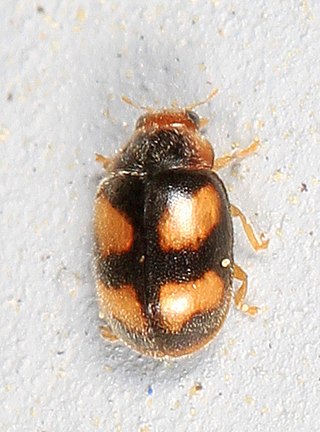
Diomus is a genus of lady beetles in the family Coccinellidae. There are at least 20 described species in Diomus.
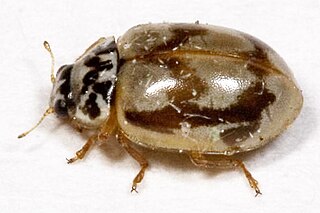
Mulsantina is a genus of ladybugs, found in North and Central America and in the Caribbean (Haiti).

Novius is a genus of ladybird beetles belonging to the family Coccinellidae, and the sole member of the tribe Noviini. The genus as presently defined contains over 70 species, most of which were formerly placed in the genera Rodolia and Anovia, but after decades of debate, both of these genera are now considered to be junior synonyms of Novius.
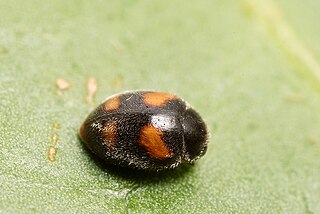
Scymninae is a subfamily of beetles in the family Coccinellidae. There are at least 170 described species in Scymninae.

Brachiacantha is a genus of lady beetles in the family Coccinellidae. There are at least 25 described species in Brachiacantha.

Cycloneda is a genus of spotless lady beetles in the family Coccinellidae. There are more than 20 described species in Cycloneda.
Thalassa is a genus of lady beetles in the family Coccinellidae. There are at least six described species in Thalassa.

Exoplectra is a genus of lady beetles in the family Coccinellidae. There are about nine described species in Exoplectra.
Cryptognatha is a genus of lady beetles in the family Coccinellidae. There are at least three described species in Cryptognatha.

Azya is a genus of lady beetles in the family Coccinellidae. There are about 12 described species in Azya.

Orcus is a genus of lady beetles in the family Coccinellidae. There are at least 18 described species in Orcus, found in Australia, New Guinea, New Caledonia, Java, Sumba, and the Kai Islands.

Coelophora is a genus of ladybird beetles in the family Coccinellidae. There are about 14 described species in Coelophora.

Diekeana is a genus of beetle in the family Coccinellidae, formerly included within the genus Epilachna.
Cryptogonus orbiculus, is a species of lady beetle found in India, Sri Lanka, Nepal, China, Taiwan, Japan, Thailand, Guam, and Northern Mariana Islands.
Epilachna decemmaculata, is a species of lady beetle found in India, Bhutan, China (Tibet), Taiwan, Sri Lanka and Myanmar.
Novius octoguttata is a species of lady beetle native to India, Sri Lanka, Pakistan, Myanmar and China.
